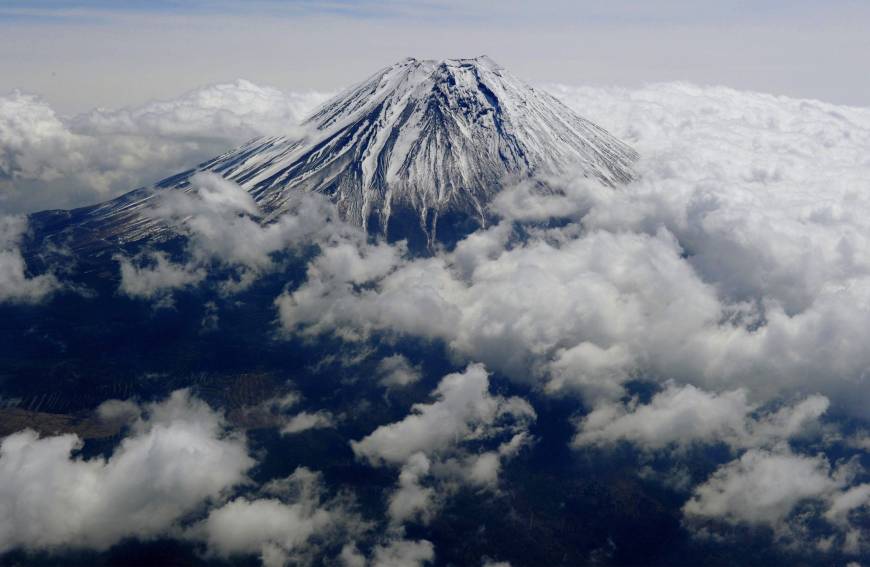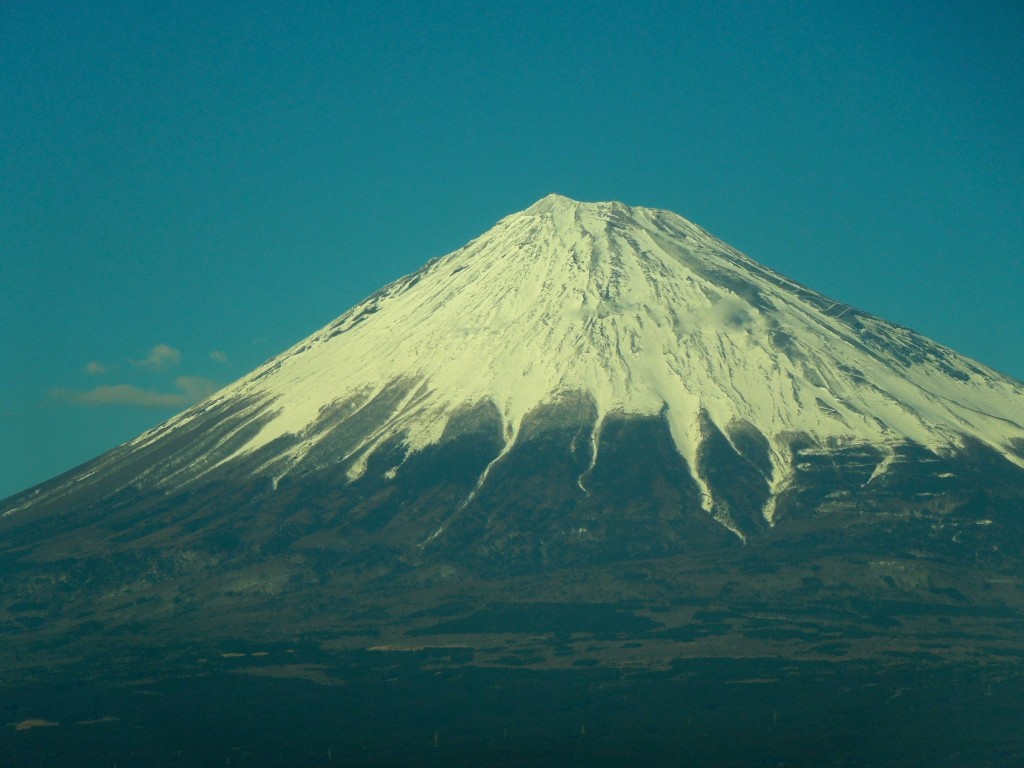
Japan's tallest mountain and an active volcano (courtesy Kyodo)
The announcement came today that Mt Fuji, Japan’s iconic mountain, has passed an important committee stage in the ratification process to be a World Heritage site (unlike the historic remains of Kamakura, which were turned down).
An essential part of the nomination was not so much the physical entity, but the Fuji-ko sect which reveres the mountain as divine. In other words, it is a cultural landscape which combines spiritual tradition with natural features. Green Shinto was fortunate to carry recently an article by Shinto priestess, Pat Ormsby on the Seven Pilgrimage Paths to Fuji. They are sure to be seeing a lot more visitors as a result of today’s decision.
Here is a report that appeared in the Japan Times today….
***************************************************************************
Mount Fuji on verge of World Heritage listing
KYODO MAY 1, 2013
An important UNESCO panel has recommended that World Heritage status be granted to Mount Fuji, putting the iconic peak on a direct path to registration.
Japan’s tallest mountain is expected to be formally listed in June when the World Heritage Committee meets in Cambodia.
However, the advisory panel, known as the International Council on Monuments and Sites (ICOMOS), also said in the late Tuesday announcement that it rejected a Japanese request to add a group of cultural assets in the ancient city of Kamakura, Kanagawa Prefecture, to the World Heritage list, citing scarce assets directly linked to the medieval shogunate’s rule.
In its request for registration, the Cultural Affairs Agency said Mount Fuji covers roughly 70,000 hectares in Yamanashi and Shizuoka prefectures, including five major lakes and the Shiraito Falls.
IMOCOS noted that the mountain is a national symbol of Japan and blends religious and artistic traditions, government officials said.

Mt Fuji in its winter garb
“We are delighted to hear the news. Once Mount Fuji is registered as a World Heritage site, we hope it will be known to more people,” said an official of Susono, Shizuoka Prefecture, at the foot of the mountain.
Yamanashi Gov. Shomei Yokouchi also welcomed the recommendation for registration.
“We would like to cooperate with the central government and Shizuoka Prefecture to make utmost efforts to enable Mount Fuji to be registered as a World Heritage site,” Yokouchi said.
The volcano is seen as a symbol of nature worship in the country and has been depicted in ukiyo-e woodblock prints, the agency said in its filing with UNESCO.
For the 3,776-meter peak to be listed, however, ICOMOS said the Miho-no-Matsubara pine grove, which Japan sought to include as part of the asset, must be excluded, because it is 45 km from Mount Fuji and can’t be considered a part of it, the Japanese officials said.
If formally approved, Fuji will be Japan’s first registered World Heritage site since the historic Hiraizumi area in Iwate Prefecture was listed in 2011, and bring Japan’s total listings to 13.
The government officially asked UNESCO in January 2012 to register the two sites in 2013. In December, ICOMOS requested additional information.
The request for Kamakura covered a roughly 2,000-hectare area, including Tsurugaoka Hachimangu Shrine, Enkaku Temple and the Great Buddha.
Kamakura was the seat of a samurai government from the late 12th to 14th centuries that nurtured cultural practices including the tea ceremony and Zen rituals.
Registration on the World Heritage list is aimed at preserving precious cultural assets and natural treasures for future generations, but is also significant in boosting tourism.

Leave a Reply